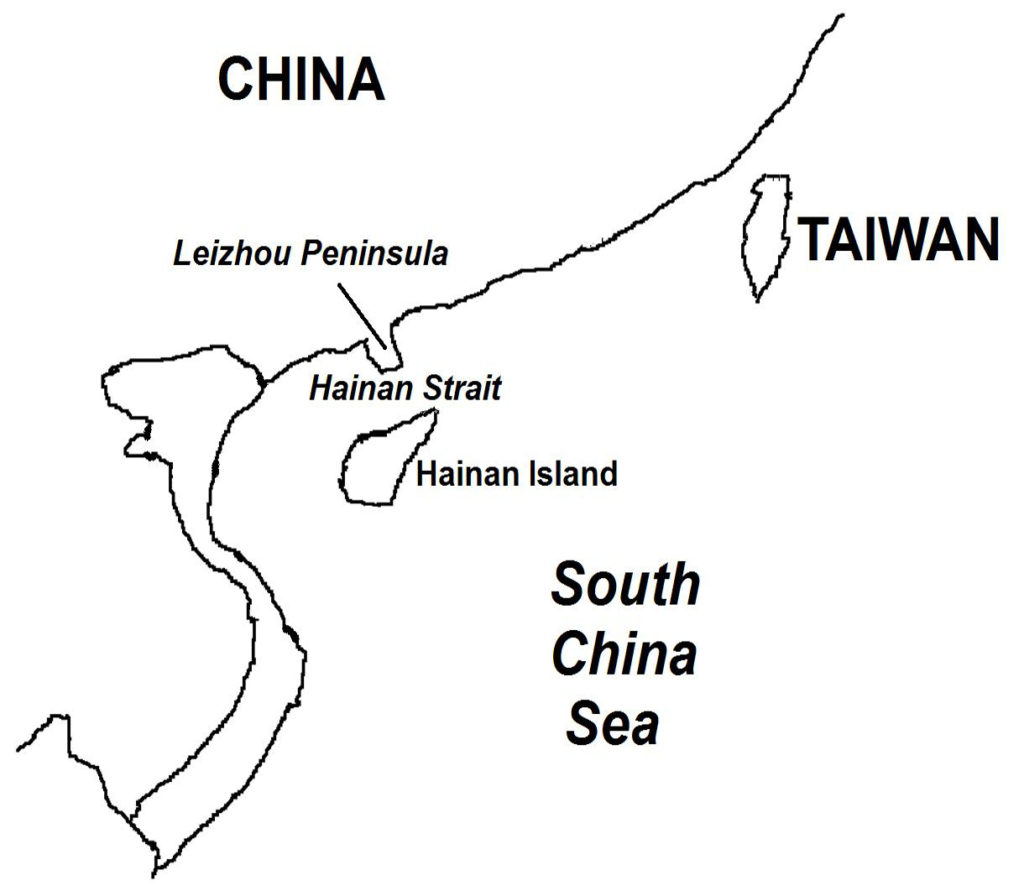On the night of April 10, 1950, the first wave of the Red Chinese main invasion force, consisting of 12,000 soldiers aboard 350 motorized junks, set out from the Leizhou Peninsula in southern China. While the junks were crossing Hainan Strait, they were spotted by Nationalist Navy ships, which moved in to attack. Another flotilla of Communist junks, however, moved into position behind the Nationalist ships. A naval battle followed. The Communists fired at the Nationalist ships using field guns retrofitted on the junks. The artillery fire from the Nationalist ships was ineffective, as their rounds, intended for armor, simply smashed into the wooden junks without detonating. Following several hours of fighting, the Nationalist ships withdrew after sustaining heavy damage. Foggy conditions during the night prevented the Nationalist warplanes from joining the battle.
(Taken from Landing Operation on Hainan Island – Wars of the 20th Century – Volume 1)
The first wave of the Communists’ main invasion force landed along two points located north of the island. These assaults were aided by Communist soldiers from the earlier landings who had advanced north to attack the other Nationalist garrisons. On April 17, 1950, the main Nationalist garrison on the island collapsed, allowing more Communist troops to pour into Hainan.
After establishing a beachhead, the invading forces launched a three-pronged offensive to the south: one toward the southeast, another along the west, and the third through the interior. By May 1, the whole island had been captured. One hundred thousand Nationalist soldiers were taken prisoner; some 60,000 escaped by sea and air to Taiwan.

Map 6. Hainan Island in southern China. In April 1950, Chinese communist forces from the Leizhou Peninsula crossed Hainan Strait and invaded Hainan. After three weeks of fighting, Nationalist forces defending the island were defeated.
The Nationalists’ defeat in Hainan sent shock waves all across Taiwan where desperation began to set in among the civilian population. The United States, having ceased support for President Chiang Kai-shek’s government, believed that Taiwan would fall before the end of 1950.
Encouraged by the success of the Hainan invasion, China began preparations to invade Taiwan. Tens of thousands of Red Army soldiers were assembled, as were thousands of fishermen who were enlisted to pilot the thousands of junks needed for the operation. Commercial freighters were retrofitted for naval combat and sunken warships from the Chinese Civil War were raised and repaired.
The planned Chinese invasion of Taiwan, however, did not materialize. In June 1950, North Korea invaded South Korea, where U.S. Army troops were stationed. Suddenly dragged into the conflict now known as the Korean War, the United States broke its neutrality in the region and sent its Seventh Naval Fleet into the Korean Peninsula. The U.S. naval presence and renewed American support for Chiang’s government forced China to cancel its planned invasion of Taiwan.
